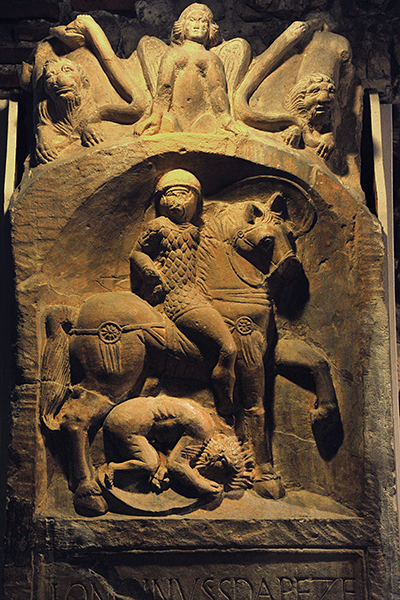Quintus Petillius Cerialis

The commander of Legio IX Hispana was Petillius Cerialis Caesius Rufus. Although his force was massacred, Cerialis managed to return safely to camp with his cavalry. Indeed, Salway characterizes the legate as "a man whose career is remarkable for the number of times he escaped from the brink of military disaster." Certainly, Tacitus is critical and regards him as bungling and ineffectual.
A decade later, Cerialis was sent by Vespasian, to whom he may have been related by marriage, to suppress the Batavian rebellion on the Rhine. Afterwards, he returned to Britain as its governor (AD 71-73/74) to renew a policy of military campaigns against the Brigantes in the north.
What is intriguing are his words to the Roman provincials in Gaul, which Tacitus records in his Histories (IV.73-74).
"Roman commanders and generals entered your land and the lands of the other Gauls from no desire for gain but because they were invited by your forefathers, who were wearied to death by internal quarrels....There were always kings and wars throughout Gaul until you submitted to our laws. Although often provoked by you, the only use we have made of our rights as victors has been to impose on you the necessary costs of maintaining peace; for you cannot secure tranquillity among nations without armies, nor maintain armies without pay, nor provide pay without taxes: everything else we have in common....For, if the Romans are driven out—which Heaven forbid—what will follow except universal war among all peoples? The good fortune and order of eight hundred years have built up this mighty fabric which cannot be destroyed without overwhelming its destroyers: moreover, you are in the greatest danger, for you possess gold and wealth, which are the chief causes of war. Therefore love and cherish peace and the city wherein we, conquerors and conquered alike, enjoy an equal right: be warned by the lessons of fortune both good and bad not to prefer defiance and ruin to obedience and security."
And so Rome justified its conquests.
The tombstone above of Longinus Sdapeze, a Thracian auxiliary cavalryman, dates to about AD 60 and (together with that of Marcus Favonius Facilis) is the oldest Roman gravestone in Britain. After fifteen years in the Roman army, he died in Colchester at the age of forty, sometime between AD 43 and AD 49, when Legio XX was transferred and the military garrison became a colony. Indeed, it is possible that Longinus had arrived with Claudius and accompanied the emperor to Colchester.
His rank as duplicarius (in the second line of the inscription) signifies that Longinus received double pay as a reward for bravery or service. But he did not complete the twenty-five years that would have entitled him to Roman citizenship. Although Longinus is his praenomen, Sdapeze retained his tribal name and must have died while still in the army.
Discovered in 1928, the stele, which depicts the cavalryman triumphant above the naked figure of a cowering Briton, is in the Colchester Castle Museum. Remarkably, the face of Longinus, which was thought to have been damaged during the Boudican revolt, when the tombstone itself was broken and overturned, was discovered in 1996, when the original find-spot was excavated again by an amateur archaeologist.
References: The Oxford Illustrated History of Roman Britain (1993) by Peter Salway; Tacitus: The Histories (1931) translated by C. H. Moore (Loeb Classical Library).